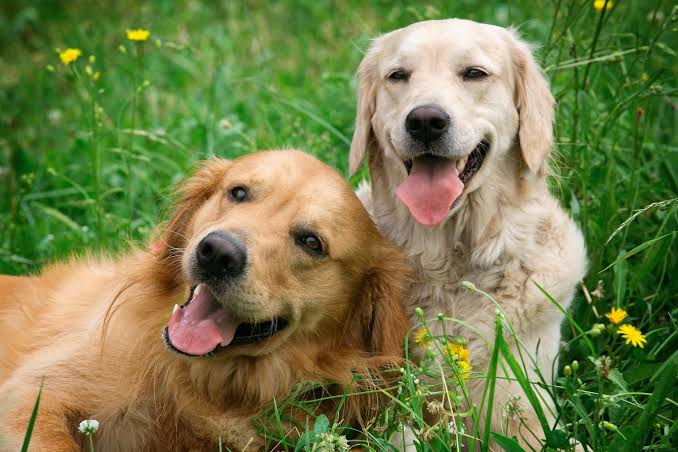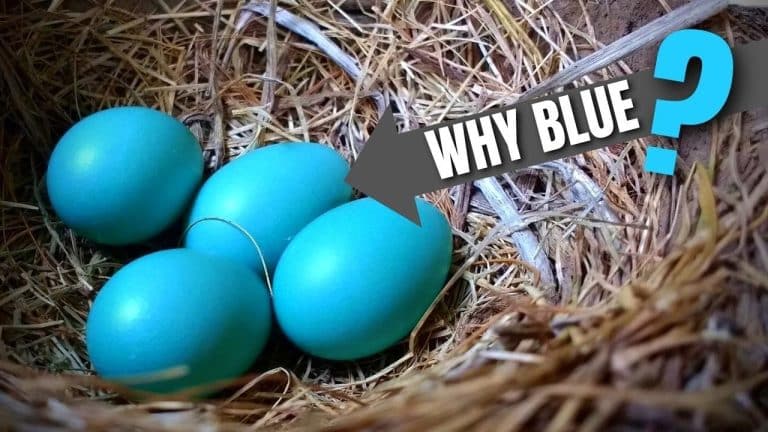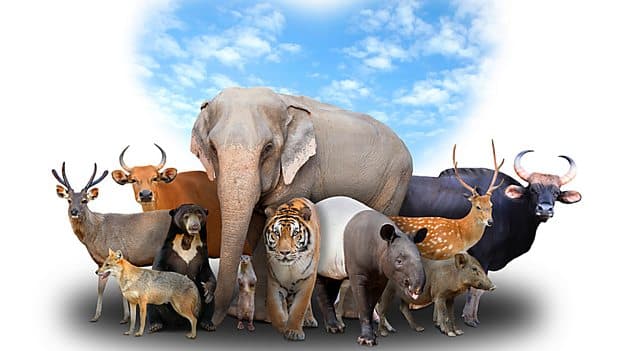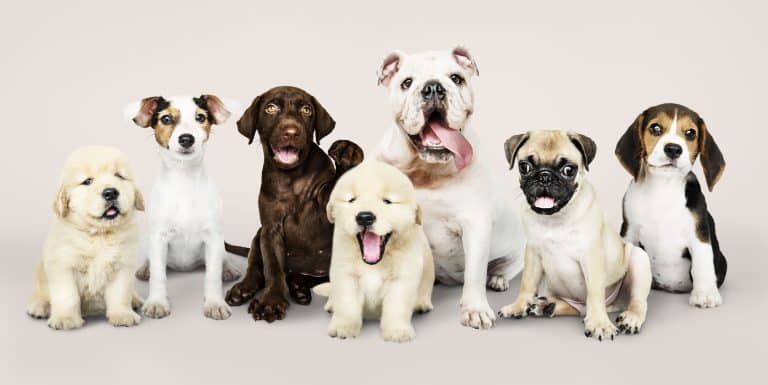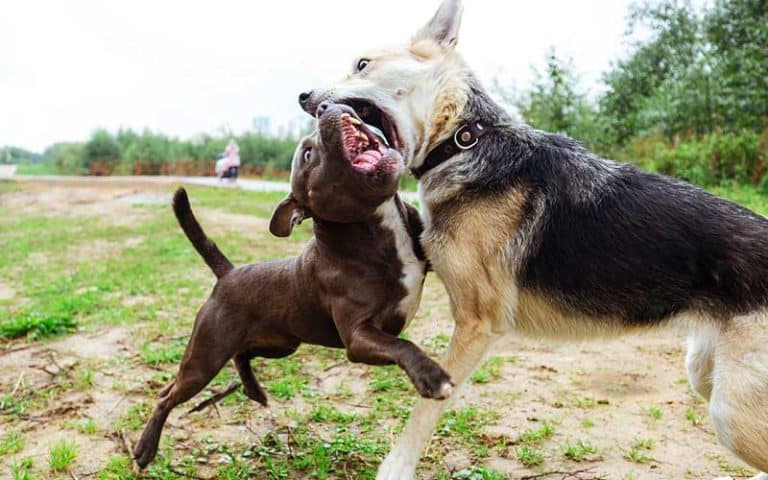Convert Human Years to Dog Years
Dogs bring joy to their owner’s unmatchable life. Their presence is enough to brighten up a sad day, and dogs are a human’s best friend in the true sense. While dog owners enjoy every little part of their time with pets, what becomes saddening is their fur baby’s age. You must have heard that all good things last shorter than you would want to, and the same applies to little furry friends.
A dog’s life is way shorter when compared to a human’s life. However, have you ever wondered how their life cycle is calculated, or do they have the same calendar as us? The answer to all your questions is No. Your furry friend has a different life cycle than yours, and we are here to learn all about this difference.
Learn How to Calculate Dog Years to Human Years

Being a dog lover or parent, you would have probably already heard that one year of your dog’s life is equivalent to seven years of your life. This has been a common calculation for years, and it was based on the idea of a 7:1 ratio- Humans have an average life expectancy of seventy years while dogs have ten years.
The actual cycle is slightly different and not so straightforward. Many researchers argue that this formula was a marketing policy adopted by vets in earlier times to make dog parents visit them more often every year, thinking that their fur babies are aging faster and need medical assistance as per the age suggested.
Finding a precise formula to calculate a dog’s age in human years is quite complex, but you can rely on these two formulas to get the closest accuracy-
1. DNA Changes
Researchers at the University of California San Diego School of Medicine developed this method. They followed DNA changes in dogs and humans by observing methyl groups. They devised a reliable formula using these observations: human_age = 16ln(dog_age) + 31). This formula suggests you multiply your dog’s age natural logarithm by 16 and then add 31.
2. Size Division
Another formula that has been proven efficient was developed by experts at the American Veterinary Medical Association. While there are varying year shifts in dogs of different sizes on average-
- The first year- 15 human years
- Second Year- 9 Human Years
- Third Year and above- Additional 4-5 human years
Note– Remember that these calculations do not provide accurate results, and your dog’s age in human years is largely based on their size. The formulas mentioned above can be used to get an average idea.
Smaller Dogs: Do They Have a Longer Life?
There is a common belief, and many studies show that smaller dogs tend to live longer than larger dogs.
Yes, you heard it right. You might ask how did researchers come to this conclusion? To put it- Vets consider a dog senior when they reach about 7 years of age. However, health-related issues of a “senior” dog were marked at an age between 5 to 6 years in larger dogs, which made them believe that smaller dogs have a larger life expectancy than larger dogs.
The reason behind age and body mass has not been proven, but there is a relationship between the two. There have been studies done to prove that a dog’s life gets reduced by a month by every 4.4 pounds of added weight/body mass. Surprisingly, larger animals tend to live longer than smaller ones. Take an example of an elephant’s life and the life of mice. The former has a way longer life than the latter.
This might sound daunting, but can we blame you when even researchers have been baffled?
Dog Life: A Guide Based on a Dog’s Size
Now that we have established that smaller dogs have more life than larger dogs let’s understand the age shift with a simple table. Before that, you must understand that the division is based on the dog’s size-
- Small: Under 20 lbs
- Medium: 21-50 lbs
- Large: 51-100 lbs
- Giant: 100+ lbs
The table is based on research done by experts for years, so that it might lack accuracy, but this is the closest you can get to finding your dog’s age in human years.
|
Small Dogs |
Medium Dogs |
Large Dogs |
Giant Dogs |
|
|
Dog Age |
Age |
Age |
Age |
Age |
|
1 |
15 |
15 |
15 |
12 |
|
2 |
24 |
24 |
24 |
22 |
|
3 |
28 |
28 |
28 |
31 |
|
4 |
32 |
32 |
32 |
38 |
|
5 |
36 |
36 |
36 |
45 |
|
6 |
40 |
42 |
45 |
49 |
|
7 |
44 |
47 |
50 |
56 |
|
8 |
48 |
51 |
55 |
64 |
|
9 |
52 |
56 |
61 |
71 |
|
10 |
56 |
60 |
66 |
79 |
Why Should You Know Your Dog’s Age in Human Years?
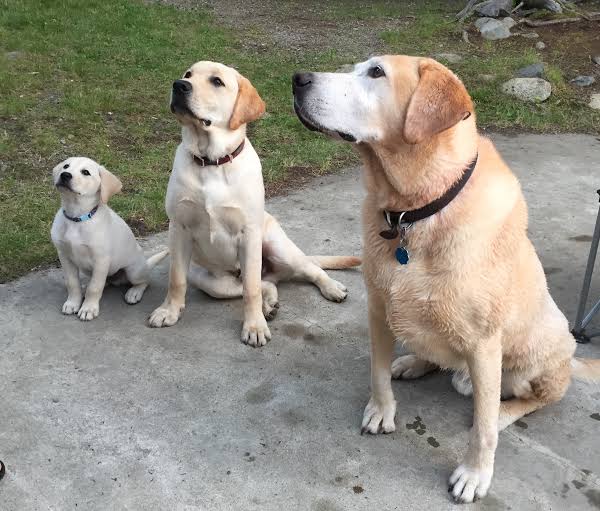
All this information must have made you think- Why should I know my dog’s age in human years? You should be aware of your dog’s age in human years for many reasons. First, you would love to get an insight into their life cycle to understand and know them better. Look at these reasons that are enough to convince a pet parent-
1. Fun and Insightful
Let’s get you on board with a simple reason: finding out about your dog’s life cycle regarding human years is fun and insightful. There are several studies done to introduce an accurate formula backed with interesting patterns in different dog breeds and sizes that are insightful to read. Wouldn’t you want to know your dog’s life cycle?
2. Health Concerns
Secondly, being a dog parent, you must know that your fur babies can not communicate all about their feelings and health issues. Knowing their age in human years will help you better track their health. For instance, if your dog is 5 years old, it makes them approximately 50-55 years old in human years, which means that their health concerns are increased, and they might need more checkups than earlier.
3. Quality Time
Lastly, once you know puppy age in human years, you automatically become more careful around them. You would want to spend more time with your furry friends, play, and constantly pamper them. Who would say no to quality time and better memories with their fur babies?
Aging: Look Out for These Signs in Your Pet
Your fur baby, a constant companion and a ray of sunshine, shows signs of aging like you. While this might make you sad, you need to look for aging signs in your dog to provide them with better health care and pampering sessions.
Understanding aging signs is not rocket science, so if you are aware, you can observe signs in two aspects-
1. Physical Signs of Aging
- Bad breath: You might have observed bad breath in your dog many times, which tends to go after washes. However, if you suddenly observe extreme and stubborn bad breath, this can be a sign of aging. This is so because, like humans, dogs also face tooth or oral infections accompanied by weakened gums as they age.
- Cloudy eyes: Look out for your dog’s vision, especially around familiar areas. If they keep bumping into objects, this is a sign of cloudy eyes or bad vision, which is common in older dogs. You do not need to panic as vision loss is easily treatable.
- Laziness: Most dog breeds have a natural tendency to be physically active. If your fur baby has been a jumpy, excited dog and you notice a sudden wave of laziness, this can also be a sign of aging. Canine arthritis and degenerative diseases are common reasons for laziness in older dogs.
- Weight change: As your dog gets old and lazy, they are meant to gain weight. In addition, you must also keep track of their weight changes, as a sudden drop can indicate aging signs/diseases.
- Excretory problems: Urinary Tract Infections and Canine Kidney Disease are common in older dogs. Dogs who find it difficult to poop or pee might also be undergoing these diseases, indicating their age.
2. Mental Signs of Aging
- Barking: Mental illness or signs are common in dogs. If you find your dog barking unnecessarily instead of their natural barking habits, this can be a sign of aging that causes discomfort and annoyance in dogs.
- Increased Anxiety: Yes, dogs deal with anxiety as well. With age, dogs tend to get more anxious, and you can observe changes in their everyday behavior to find anxiety symptoms. Many studies show that anxiety in older dogs is a common issue that can be dealt with through exercise.
- Lack of Interest: There must be a toy or game that your fur baby loves. If you notice a sudden lack of interest in that chewy toy or frisbee session, this indicates their laziness and mental fatigue at times.
- Bad Memory: Like humans, dogs also suffer memory loss as they age. You can figure out signs of memory loss if your dog forgets everyday routine, obstacles around the house, pooping space, etc.
Note– These signs are not designed to get you in a panic mode but to help you understand the meaning behind your dog’s behavior.
Healthy Tips for New Pet Parents

Being a pet parent comes with tremendous responsibility you would never want to back out from. Hearing tips and opinions from fellow pet parents might sometimes appear confusing and noisy. You must remember that caring for a fur baby is not all that difficult. We have prepared a list of things you can do to ensure your dog’s longer and healthier life. Let’s dive right into them
- Diet: A healthy diet for a long life goes without saying. You do not want to risk your dog’s health by providing them with a diet not meant for their breed, age, and size. A healthy diet does not need to be complex but simple additions based on your dog’s needs. In addition, always keep your fur baby hydrated as they jump and play all day.
- Physical activities: Physical activities are important for all dog breeds and have more impacts on their health than you thought. Make sure to engage them in walks, runs, and exercises to develop strong bones, muscles, and organ health. Physical activities also help their mental health, making them an inescapable factor in raising dogs.
- Vet visits: All the love your dog has for you, they can still not communicate their health problems. This is why you must schedule monthly vet visits to keep track of their health. Your dog can appear healthy, but there might be a slight chance of underlying health issues you would want to eliminate immediately.
- Healthy environment: Bringing a fur baby home is like bringing a human baby into your life. They need and deserve a happy, healthy, and loving environment. Play dates, cuddles, and pampering sessions are important to raising them. A sad and neglectful environment can impact both physical and mental health.
- Grooming: Grooming is not always about making your dog look even more adorable. Regular grooming protects your furry friend from ticks, skin, and coat infections. Ensure they brush their teeth, comb coats, and bathe regularly to avoid infections.
Aging is a normal part of life, be it humans or animals. A balanced diet, quality time with loved ones, and regular health check-ups make life healthier, happier, and longer.
Additional Tip: Vet visits can cost you a big bag; you can look out for animal welfare organizations to find cheaper yet reliable options.
Bottom Line
A dog comes into your life to give you many years of love and joy, making them worthy of special treatment, especially in their older years. This is what makes understanding their life cycle and changes even more important. The traditional 7:1 ratio for calculating a dog’s years into human years is no longer reliable.
You can go for modern methods, developed based on scientific studies and promising more reliability. The idea is to make your time with dogs memorable and not to get you anxious about them aging. Smaller or larger, they come bearing nothing but love and loyalty for their owners. If you have a fur baby at home, it is time you give them extra care and take that extra step to promise a healthier and longer life.
Here’s to sending virtual pats for your fur baby.
Frequently Asked Questions
Are Dog Years and Human Years the Same?
No, humans and dogs have extremely different year calculations and life cycles. Dogs tend to live shorter than human years; however, this is not true, as one dog year is not equivalent to 365 days. Many studies show that a dog aged 5 years will probably be around 50-55 years old in human years.
Is One Dog Year Equivalent to 7 Human Years?
7:1 is a common formula for calculating dog years in human years. But this is not accurate. There are many new and reliable methods that you can use to calculate your dog’s age in human years. The simplest way is to use the formula based on their weight.
How Do I Know When My Dog is Getting Old?
Dogs are voiceless babies who show signs of aging in different ways. As they grow older, you would observe several changes in their behavior, including laziness, memory loss, vision loss, greying hair, etc.
Should I Be Worried if My Dog Shows Signs of Aging?
Aging is a natural process for all humans and animals. There is nothing to worry about. However, if you observe extreme signs, you must consult a vet to avoid any health problems in your dog.

